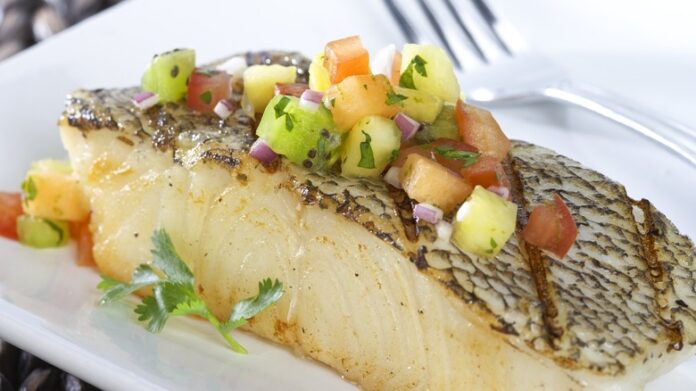Introduction
Chilean sea bass, also known as Patagonian toothfish, is a highly sought-after fish species prized for its delicate flavor and buttery texture. This article explores the fascinating world of Chilean sea bass, from its origin and habitat to its culinary uses and sustainability considerations. Join us on a journey to discover why this deep-sea delicacy has captured the hearts and palates of seafood enthusiasts worldwide.
Chilean Sea Bass: A Culinary Delight from the Deep Sea
Chilean sea bass, scientifically known as Dissostichus eleginoides, is a species of fish native to the cold, deep waters of the southern hemisphere. Its natural habitat includes the sub-Antarctic regions, such as the waters around chilean sea bass recipe, Argentina, and the Falkland Islands. These pristine waters provide the ideal conditions for the growth and development of this magnificent fish.
Origin and Habitat
The journey of Chilean sea bass begins in the icy depths of the Southern Ocean. With depths reaching over 1,000 meters, this inhospitable environment is home to a diverse range of marine life, including the Patagonian toothfish. chilean sea bass recipe thrives in the cold, nutrient-rich waters where it feeds on a diet consisting of squid, krill, and other small fish.
Characteristics of Chilean Sea Bass
Renowned for its large size and distinctive appearance, Chilean sea bass is an impressive fish. It can grow up to 2 meters in length and weigh over 100 kilograms. The fish has a sleek, elongated body with silver-gray skin and a slightly bluish tint. Its flesh is snow-white and boasts a rich, buttery texture that melts in your mouth.
Culinary Uses
Chilean sea bass has gained a prominent place in the culinary world due to its exceptional taste and versatility in various cuisines. The fish’s delicate flavor pairs well with a wide range of ingredients, chilean sea bass recipe making it a favorite among chefs and home cooks alike. It can be prepared using different cooking methods such as grilling, pan-searing, or baking, allowing for a variety of dishes to be created.
Sustainable Fishing Practices
As the popularity of chilean sea bass recipe has increased, so has the need for responsible fishing practices to ensure the long-term viability of the species. To protect the fish populations and their ecosystems, fishing regulations and conservation efforts have been implemented. Additionally, certification programs such as the Marine Stewardship Council (MSC) help consumers identify sustainably sourced Chilean sea bass.
Health Benefits
Besides its delectable taste, Chilean sea bass also offers several health benefits. It is an excellent source of omega-3 fatty acids, which are essential for maintaining heart health and reducing inflammation in the body. The fish is also rich in protein, supporting muscle development and repair. Additionally, it provides essential vitamins and minerals, including vitamin D, selenium, and potassium.
Cooking Tips
To fully enjoy the flavors and textures of Chilean sea bass, proper handling and cooking techniques are crucial. When preparing the fish, ensure it is fresh and properly cleaned. Seasoning and marinating the fish can enhance its taste, while proper cooking temperatures and times help maintain its tenderness and juiciness.
Popular Chilean Sea Bass Recipes
- Grilled Chilean Sea Bass with Lemon and Herbs: Marinate the fish in a mixture of lemon juice, olive oil, garlic, and fresh herbs. Grill over medium-high heat until the flesh is opaque and flakes easily with a fork.
- Pan-Seared Chilean Sea Bass with a Ginger Soy Glaze: Sear the fish in a hot skillet with a ginger soy glaze. Serve with steamed vegetables and rice for a satisfying meal.
- Chilean Sea Bass Ceviche with Fresh Citrus: Marinate diced sea bass in a chilean sea bass recipes mixture of lime and orange juice, red onion, cilantro, and jalapeño. Allow the flavors to meld together in the refrigerator before serving with tortilla chips.
Buying and Storing Chilean Sea Bass
When purchasing Chilean sea bass, opt for fresh, sustainably sourced fish whenever possible. Look for indicators of quality such as clear eyes, bright red gills, and firm flesh. If fresh fish is unavailable, chilean sea bass recipes frozen options can be a good alternative. Store the fish in the coldest part of your refrigerator and consume it within a day or two for optimal freshness.
Conclusion
Chilean sea bass, with its exquisite taste and remarkable texture, continues to captivate seafood enthusiasts worldwide. Whether grilled, pan-seared, or incorporated into creative recipes, this deep-sea delicacy promises a culinary experience like no other. By choosing sustainably sourced chilean sea bass recipes and practicing responsible fishing habits, we can ensure the preservation of this magnificent species for generations to come.
FAQs
- Is Chilean sea bass actually a bass? No, Chilean sea bass is not a bass. It is a species of fish known as the Patagonian toothfish.
- What gives Chilean sea bass its buttery texture? The high oil content in Chilean sea bass gives it a rich and buttery texture.
- Can I substitute Chilean sea bass with another fish in recipes? While other white fish varieties may be used as substitutes, they might not offer the same flavor and texture as Chilean sea bass.
